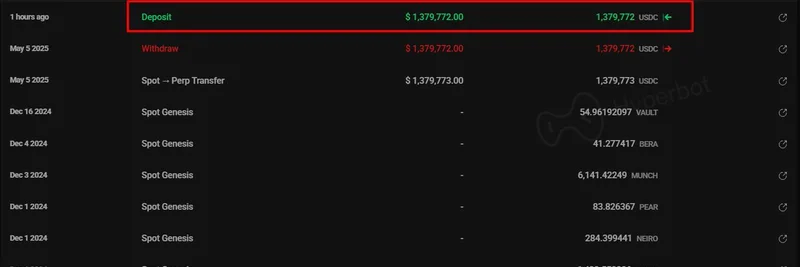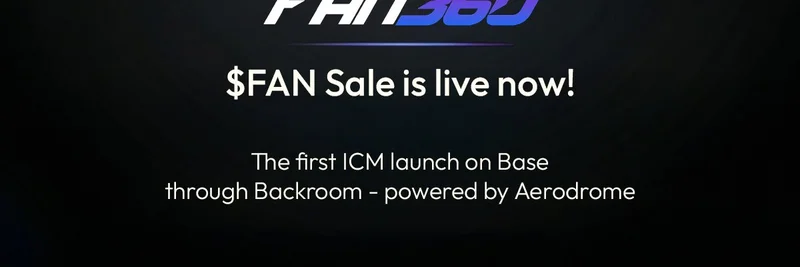Lamboland recently shared some unfiltered thoughts on X about five emerging blockchains: HyperEVM, MegaETH, Monad, Berachain (Bera), and Abstract. The post, which sparked a lively thread, dives into the potential and challenges of these new chains, especially for builders and investors in the crypto space. Let’s break down Lamboland’s take, add some context, and see what the community had to say.
HyperEVM: Promising Tokenomics for DeFi Builders
Lamboland kicks off with HyperEVM, a layer-1 blockchain that launched its native token, $HYPE, in late 2024. They note that it’s too early to predict HyperEVM’s trajectory, but its tokenomics could be a big draw for builders and investors. HyperEVM, backed by the Hyper Foundation, powers the Hyperliquid platform—a decentralized perpetual trading platform with over $1 billion in daily trading volume, as reported by Cointelegraph. The platform’s integration with an Ethereum Virtual Machine (EVM) on its mainnet gives users access to deeper liquidity pools, which could make $HYPE a valuable asset for DeFi projects.
Lamboland’s optimism about HyperEVM’s tokenomics aligns with its proof-of-stake consensus and focus on liquidity. In a reply to another user, they even suggest that HyperEVM might outshine Berachain for DeFi-savvy users, especially if farming $HYPE through dApps becomes lucrative for those with significant liquidity.
MegaETH: Great UX, but Token Value Questions Loom
Next up is MegaETH, which Lamboland praises for its user experience (UX) on the testnet. MegaETH markets itself as a “real-time blockchain,” boasting sub-millisecond latency and over 100,000 transactions per second, according to its official site. It’s designed to stay within Ethereum’s ecosystem, which could appeal to builders who want a seamless UX without leaving Ethereum’s orbit.
However, Lamboland raises concerns about the MegaETH token’s value. If the token doesn’t hold significant worth, it might limit the upside for projects building on the chain, potentially driving ambitious builders elsewhere. They also question MegaETH’s ability to distribute value to projects compared to competitors like Base, a layer-2 solution on Ethereum. A user, ika, chimed in, hoping MegaETH’s token might introduce innovative concepts to drive value, but Lamboland’s uncertainty reflects broader questions about its long-term appeal.
Monad: High Potential, but Why the Hype?
Monad, a layer-1 blockchain, promises impressive specs: 10,000 transactions per second, 1-second block times, and full EVM compatibility, as outlined on its website. It’s designed to solve the blockchain trilemma—balancing scalability, security, and decentralization—through parallel execution and a custom state database. Despite these features, Lamboland is skeptical. They’re surprised Monad hasn’t launched yet (as of March 2025) and aren’t sure why builders would choose it over other layer-1s or layer-2s.
While Monad’s influential investors and high upside as a layer-1 are positives, Lamboland struggles to see the excitement around the chain or its token. This hesitation might stem from Monad’s delayed launch, which could signal development challenges or a lack of clear differentiation in a crowded market.
Berachain (Bera): Too Technical for the Average User?
Lamboland admits they haven’t dug deep into Berachain, a layer-1 blockchain that went live in February 2025. They find it overly complicated and technical, worrying that if they’re struggling to understand it, “normies” (non-crypto natives) will have an even harder time. Berachain’s core innovation is its proof-of-liquidity (PoL) consensus mechanism, which incentivizes liquidity provision to align ecosystem participants, as explained in its docs. PoL separates the token for gas and security from the one governing rewards, aiming to bolster both application-layer and chain security.
The community had mixed reactions to Lamboland’s take on Bera. SmokeyTheBera, a prominent Berachain account, replied that they’re working on “normie-friendly explainers” and teased “funky stuff” for the summer of 2025. Another user, BenMac, agreed that Berachain needs work but highlighted its potential to onboard users through products like Puffpaw, a customer-focused project. However, Lamboland remains skeptical about Bera’s ability to attract mainstream users, though they’re open to being proven wrong.
Abstract: Success Hinges on the Pudgy Team’s Motivation
Finally, Lamboland touches on Abstract, a chain tied to the Pudgy Penguins team. They believe Abstract’s success depends on the Pudgy team’s motivation. The team has a strong track record—Pudgy Penguins is a well-known NFT project—but Lamboland notes their attention is spread thin across multiple assets in their ecosystem. After a liquidity event with $PENGU, the team might have cashed out, leaving their current drive unclear.
A user, Senti, sees Abstract as a potential Web3 streaming platform, leveraging tipping and gaming culture. However, they don’t buy into the “consumer chain” narrative, doubting any chain can fully onboard normies just through UX. Interestingly, ika pointed out similarities between Abstract’s panoramic governance and Berachain’s proof-of-liquidity, suggesting some overlap in their approaches to ecosystem incentives.
Community Insights and Broader Context
The thread sparked thoughtful replies that added depth to Lamboland’s analysis. For instance, DirectorVibes asked about Blast, another chain, noting its absence from the list. Lamboland’s curt reply—“I do not like Blast”—hints at deeper issues, possibly tied to Blast’s association with Pacmoon, a project DirectorVibes mentioned. This exchange shows how community sentiment can influence perceptions of a chain’s relevance.
Lamboland’s post also reflects broader trends in the crypto space in 2025. New blockchains are competing fiercely for builders and users, each trying to carve out a niche. HyperEVM and Berachain focus on liquidity-driven models, MegaETH and Monad prioritize performance within the Ethereum ecosystem, and Abstract leans on a strong community brand. Yet, as Lamboland and the replies highlight, technical complexity, token value, and user onboarding remain key hurdles.
What’s Next for These Chains?
Lamboland’s analysis offers a snapshot of these blockchains’ potential and pitfalls as of March 2025. HyperEVM seems poised to attract DeFi builders with its liquidity focus, while MegaETH’s UX could make it a strong contender if it resolves token value concerns. Monad’s high specs are intriguing, but its delayed launch raises questions. Berachain’s technical approach might limit its audience unless it simplifies its pitch, and Abstract’s success depends on the Pudgy team’s commitment.
The crypto space moves fast, and these chains will need to adapt to stay competitive. What do you think about Lamboland’s takes? Are you bullish on any of these blockchains, or do you see other contenders stealing the spotlight? Let’s keep the conversation going!



